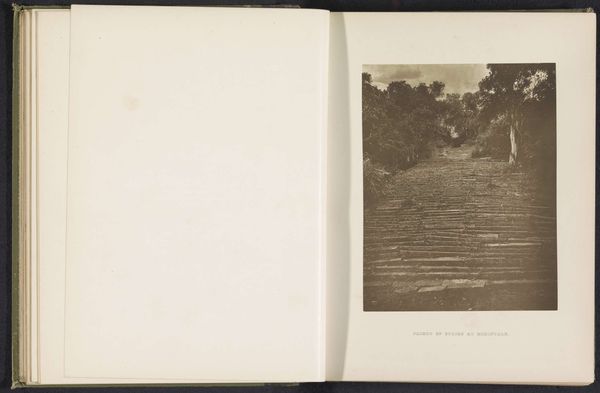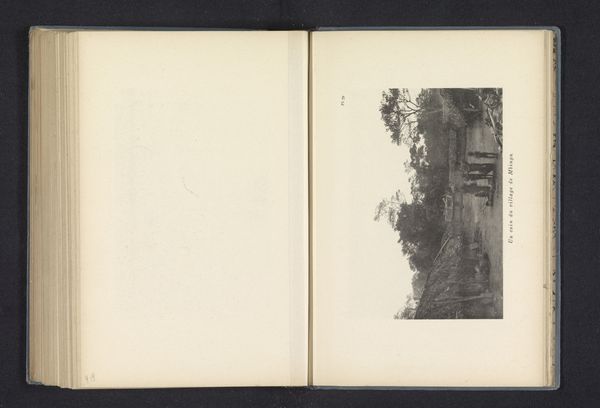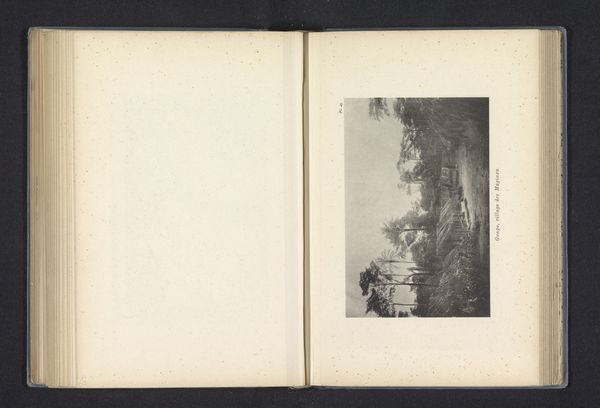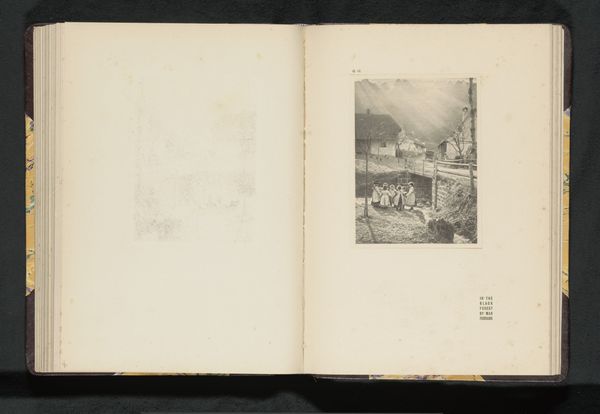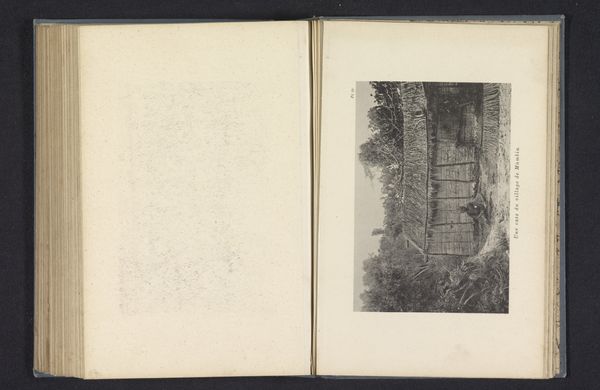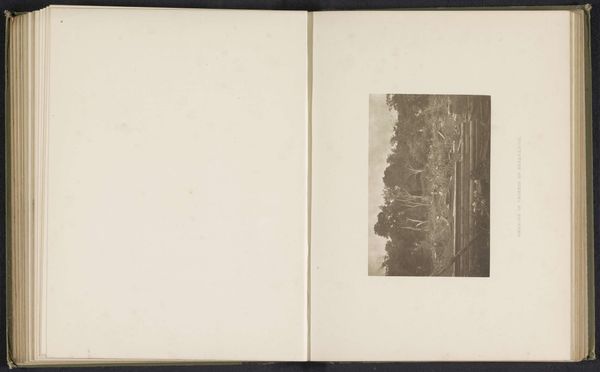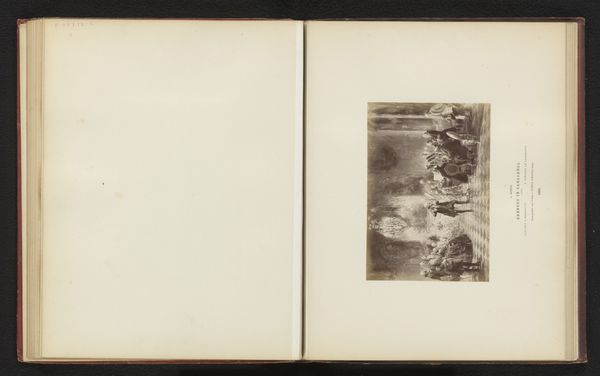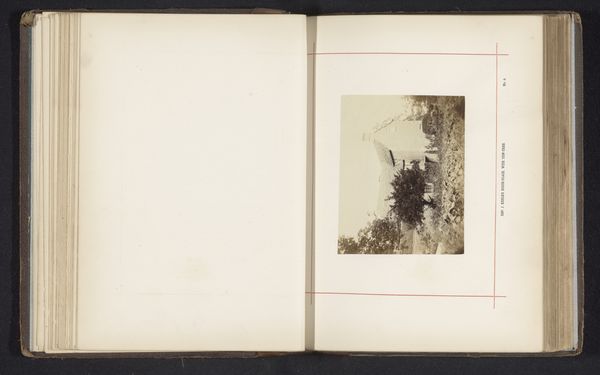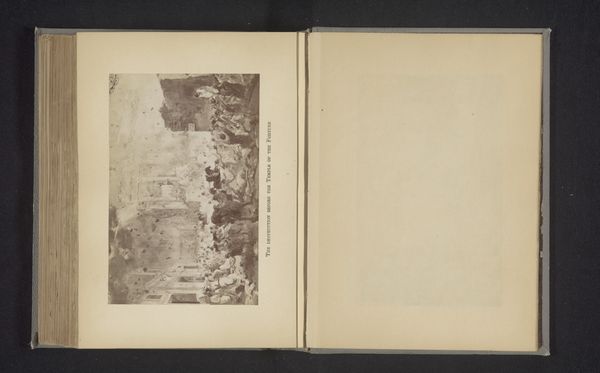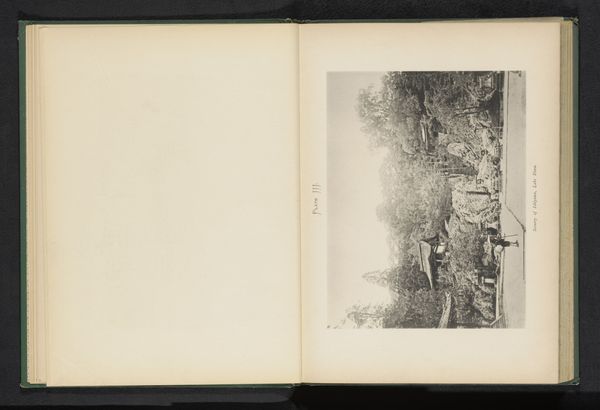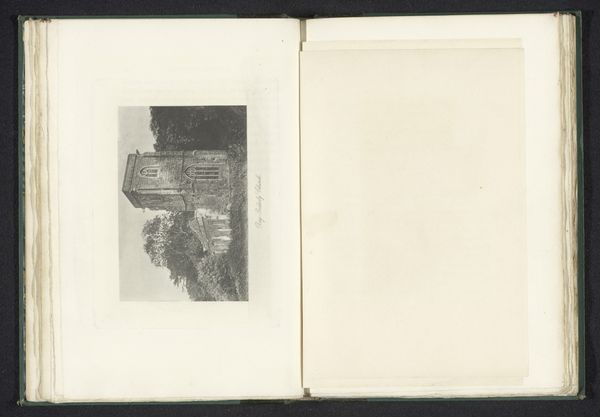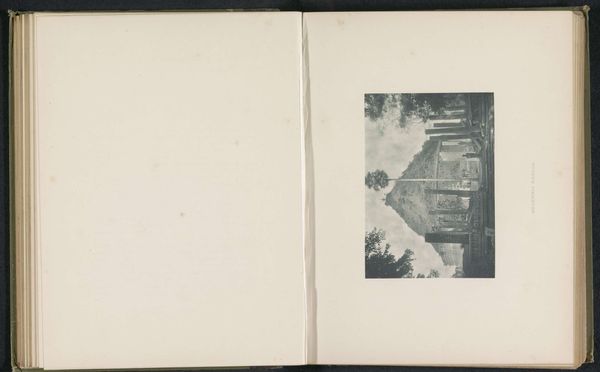
print, photography, albumen-print
#
aged paper
#
still-life-photography
#
homemade paper
#
script typography
# print
#
impressionism
#
sketch book
#
hand drawn type
#
landscape
#
photography
#
personal sketchbook
#
hand-drawn typeface
#
fading type
#
thick font
#
cityscape
#
albumen-print
#
historical font
Dimensions: height 113 mm, width 163 mm
Copyright: Rijks Museum: Open Domain
Editor: This is "Gezicht op woningen nabij de Dande," a print by José Augusto da Cunha Moraes, made before 1886. It depicts a cluster of buildings near the Dande River, rendered in what looks like an Albumen print. The monochrome tones create an aged and somewhat melancholic atmosphere, and there's a sharp contrast with the bareness of the opposing page. What historical or cultural significance do you find in this piece? Curator: That's a keen observation. The melancholy you sense might stem from the sociopolitical context of the time. Portugal, during the late 19th century, was grappling with questions of colonial power, particularly in places like Angola, where the Dande River is located. Do you think that viewing this landscape as more than just a quaint scene, but rather as a representation of colonial space, adds a layer to its meaning? Editor: It does. It’s hard to ignore that contrast, the starkness of the landscape photograph next to the empty page. Curator: Exactly. That very opposition can be interpreted as speaking volumes. The emptiness might represent the unacknowledged histories and erased narratives of the indigenous population, contrasting the visual "possession" of the land through photography. Does considering this reframing of the piece change your perception of its aesthetic value? Editor: Absolutely, I was initially drawn to the technical aspects of the print and its stylistic qualities. But situating the image within its historical context and recognizing its possible colonial implications makes it much more impactful and unsettling. Curator: And that’s exactly where art becomes a powerful tool. It makes us question, reassess, and hopefully, move toward a more inclusive understanding of our shared past and present. Editor: I see it differently now. I was missing a critical layer. Curator: Recognizing that absence is often the key to truly seeing.
Comments
No comments
Be the first to comment and join the conversation on the ultimate creative platform.

